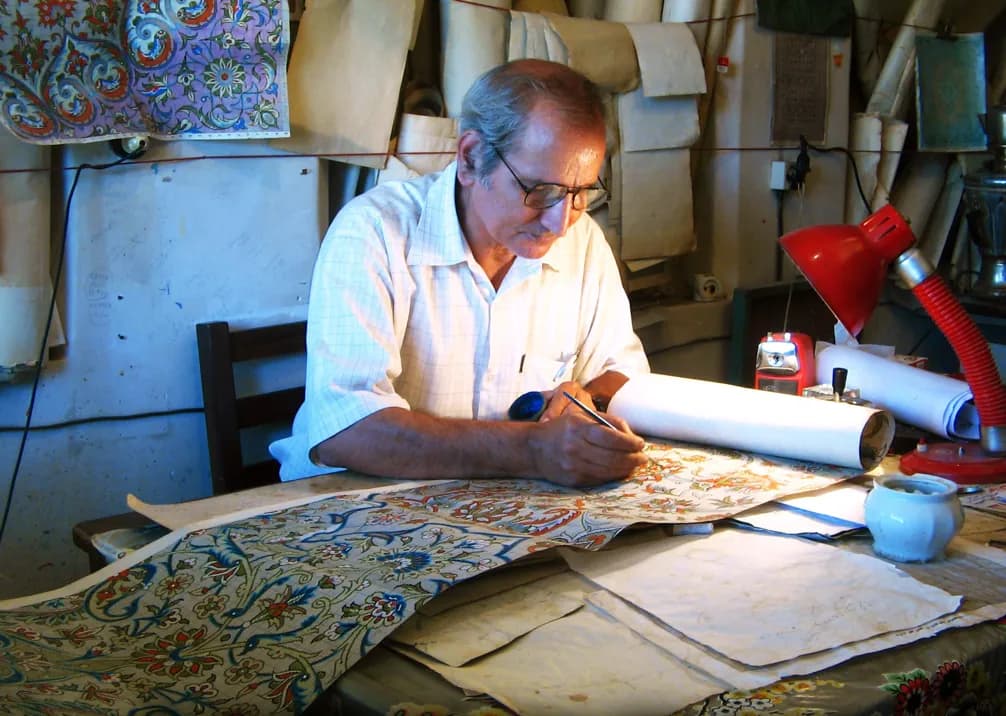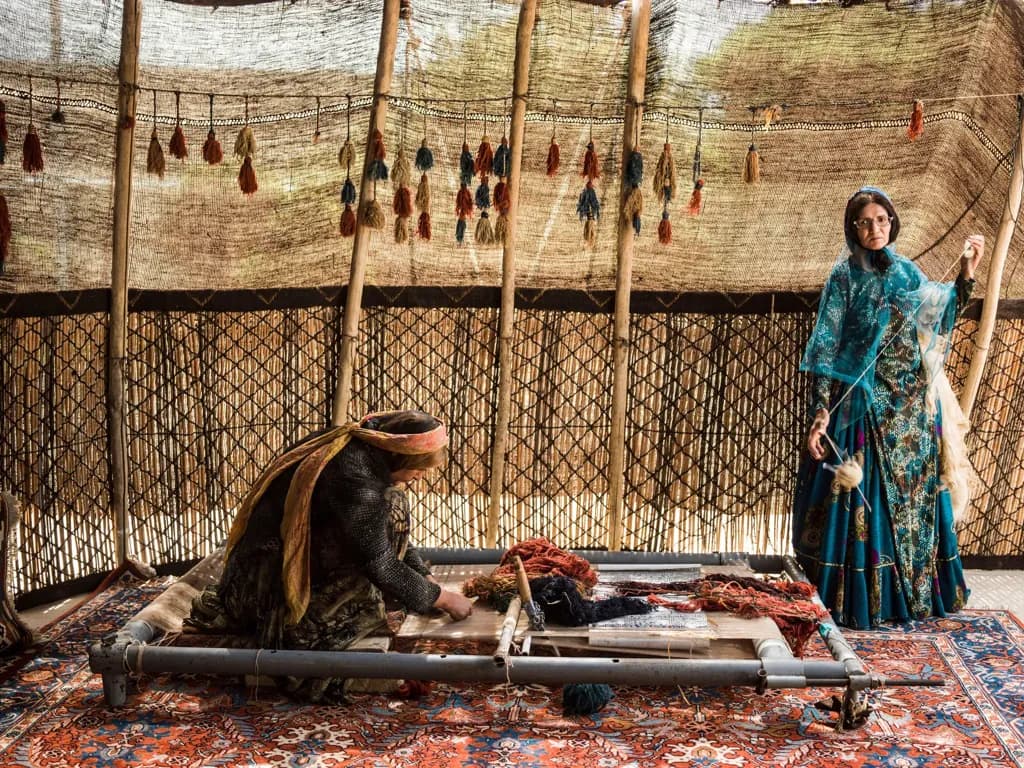Meshginshahr rugs, originating from the historic city in Ardabil province, reflect the rich weaving traditions of northwestern Iran. These carpets combine elements of both urban and tribal designs, creating pieces that are both sophisticated and authentically expressive.
These rugs typically feature geometric patterns with tribal influences, often incorporating medallionA central design element in many Oriental and Persian carpets, typically a symmetrical pattern that anchors the overall design. designs and repeating motifs. The patterns frequently include stylized floral elements and angular shapes arranged in balanced compositions that reflect both Turkish and Persian influences.
The color palette of Meshginshahr rugs tends toward rich, warm tones dominated by deep reds, blues, and browns. These primary colors are often enhanced by contrasting ivory and touches of green and gold. The dyes used create colors with excellent aging characteristics and resistance to fading.
The woolA natural fiber used in high-quality carpets, prized for its durability, resilience, natural stain resistance, and fire-retardant properties. used in Meshginshahr carpets comes from sheep raised in the surrounding mountains, known for producing particularly durable fleece. This high-quality woolA natural fiber used in high-quality carpets, prized for its durability, resilience, natural stain resistance, and fire-retardant properties., combined with traditional weaving techniques, creates pieces with excellent durability and a distinctive texture.
Technically, these rugs feature moderate knot counts, typically ranging from 120-250 KPSIKnots Per Square Inch, a measure of quality in hand-knotted rugs. Higher knot counts generally indicate finer detail and higher quality. (knots per square inch). The foundation is usually cotton, though some pieces feature woolA natural fiber used in high-quality carpets, prized for its durability, resilience, natural stain resistance, and fire-retardant properties. warps and wefts. This construction creates carpets that balance refinement with durability.
Modern Meshginshahr production maintains strong links to traditional methods while incorporating subtle adaptations to contemporary tastes. These pieces often feature slightly simplified versions of classical patterns that work well in modern interiors.
The investment value of Meshginshahr carpets lies in their combination of artistic merit and practical durability. Each piece represents a significant cultural heritage, where Turkish and Persian influences combine to create distinctive works of textile art.
These rugs are particularly valued for their versatility in both traditional and contemporary settings. Their geometric patterns and rich colors provide sophisticated accent pieces that work especially well in modern design contexts, where their authentic character creates compelling visual contrast.



























